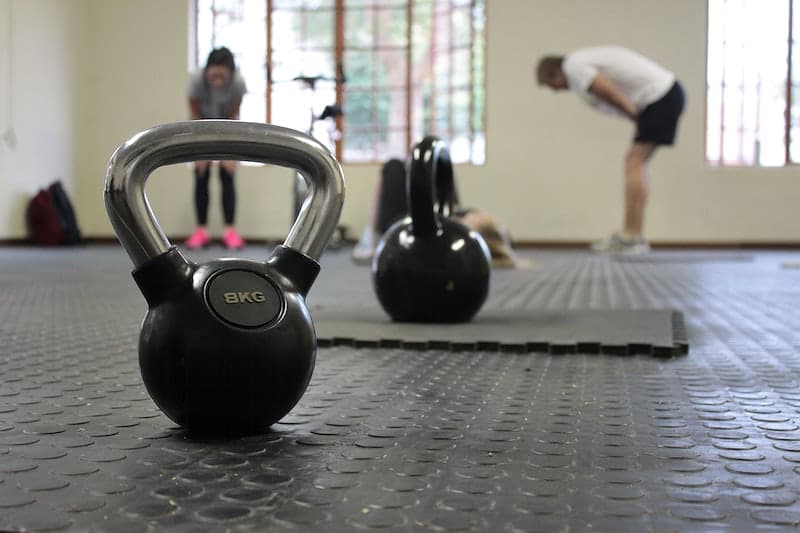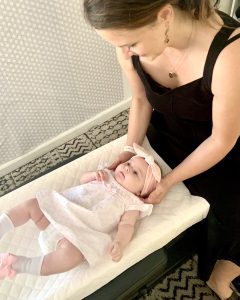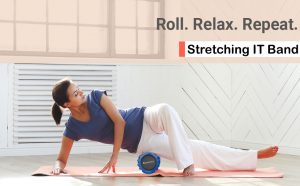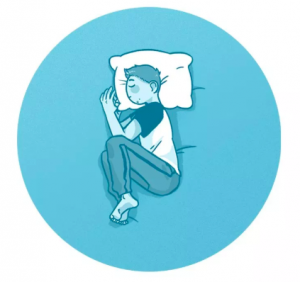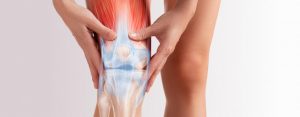What is a functional movement? There are seven functional movements that your body utilizes throughout the day. At work, at play, at home – these seven movements are constantly being used so it is imperative to perform them correctly and efficiently. This will reduce stress on your body and help prevent injury. All other movements are derived from or are a combination of these seven functional movements. Movement can, and should be, simple and functional. We’ve outlined the seven functional movements below so you can check your proficiency.
The squat.
Everyone squats at some point during the day, whether it’s to get down on the floor to play with your kids or getting out of a chair, so the importance of having a strong squat is imperative. Keep your head up and feet shoulder distance apart and planted into the ground as you drop your hips and knees down together, lowering your center of gravity.
The hinge.
This movement works the back of your body – legs, thighs and core, and transfers functionally to picking something heavy off the floor. For this movement, place your feet planted slightly wider than shoulder distance apart with a slight bend in your knees. Reach your hands toward the ground while pushing your hips back, keeping your back flat. Come back to your starting position slowly, keeping your head in line with your spine. Having proper form during this movement helps minimize the load on your spine, thus decreasing risk of low back injuries.
The lunge.
This primarily lower body movement allows us to travel up and down stairs easily. Step one foot forward while dropping the opposite side knee towards the floor. Keep your spine and core upright and feet planted. The lunge utilizes the quads, hamstrings, glutes, calves and core and challenges your balance which provides great functionality when picking something up off the floor.
The push.
This simple movement improves upper body strength, particularly overhead, which is important for putting away the dishes or pushing an object across the floor. Moving a load away from your body constitutes a push. Make sure your back is straight and your head and shoulders in line with your hips. Keep your arms bent and close to your body with your elbows extended.
The pull.
Every time you open your car door, rake leaves and open your blinds in the morning you are engaging in the pull. To train this movement, you can perform pull ups, rowing, or as a child, climb on the playground! Any movement pulling a load towards your body constitutes as a pull. This movement engages the upper and low back muscles.
Rotation.
Also known as twisting, this functional movement involves primarily the core. Inability to properly twist is often an underlying mechanism of low back injuries. We engage in rotation when we shovel snow, cut across a football field, and dance. When performing this movement, your hips and shoulders should be in line with your core to allow for full body power. You can train this functional movement by performing Russian twists, rotational lunges, or woodchoppers.
Gait.
This functional movement is the most overlooked but arguably most important. Throughout our day, we walk everywhere so it is vital that we are efficient and powerful with this movement. Functionally, we train this movement everyday through walking. Make sure to keep your back straight and your head, shoulders and hips in line. Some hip sway and arm swinging is normal. Be sure to push off the ground firmly with the heel of your foot.
How do you function?
With these functional movements in mind, you can identify which muscle groups need strengthening. Think about your day – which of these movements do you perform the most? Which movements create pain? Checking your efficiency at these functional movements will help reduce overall stress on your body. Start incorporating these functional exercises into your day so you can remain active and pain free while doing the activities you love.
Book an appointment with us today to have your functional movement assessed
